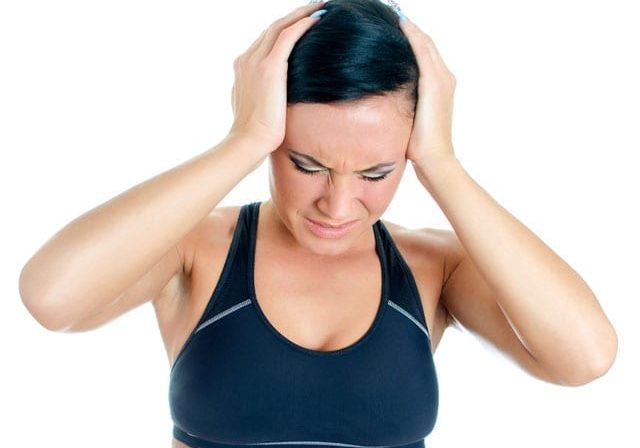Exercise headaches usually strike in younger people, from adolescence through age 50. This type of headache usually occurs with lengthy exercise sessions. The headache usually pops up at the height of exercise and the pain typically fades when the exercise stops. However, in certain cases the exercise induced headaches can last up to two days. Exercise headaches can also have symptoms similar to migraines, such as nausea and vomiting, sensitivity to light and sensitivity to sound.
Most headaches develop when blood vessels around the brain are inflamed, which stretches the nerves within and sends shock waves of pain. Regular cardio usually lessens this reaction, thanks in part to a boost of endorphins, the body’s natural painkillers, which are released during exercise. Working out also improves blood flow to the brain and reduces muscle tension and fatigue — all of which minimise blood vessel inflammation.
What’s more, physically inactive adults are at least 1 ½ times more likely to suffer from recurring headaches and migraines than those who exercise vigorously at least three times a week, a recent Swedish study found.
If you’re headache-prone, it’s also essential to prep your muscles for a workout before you hit the ground running and throughout the day—especially if you tend to sit at a desk a lot. Texting, being slumped over a computer, emailing—these can wreak havoc on your posture, which puts pressure on neck muscles, which can cause additional head strain.
But sometimes the type of activity you’re doing — or the way you’re doing it — can lessen the healing effects of exercise. Understanding what sets off your occasional workout ache is essential to keeping your health and fitness on track.
Exercise – like any therapy – is not without its risks. Any other exercise program may result in pain or injury. To reduce your risk of exercise induced headaches, consult your Physiotherapist before beginning any exercise program.

